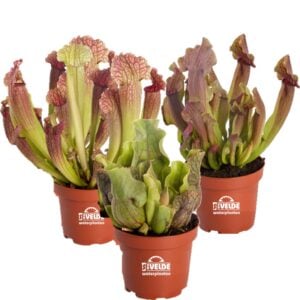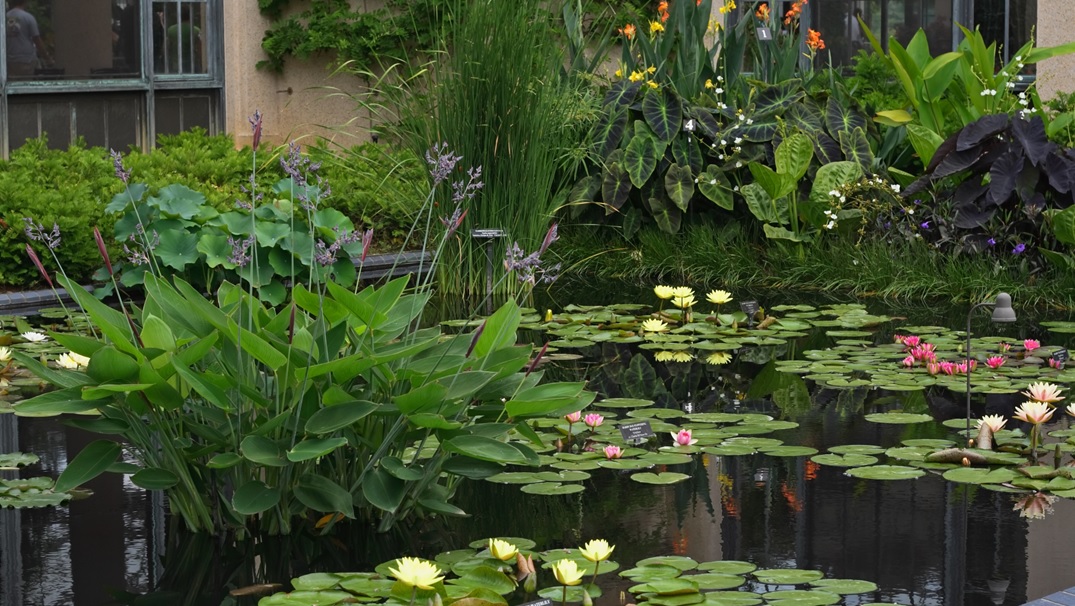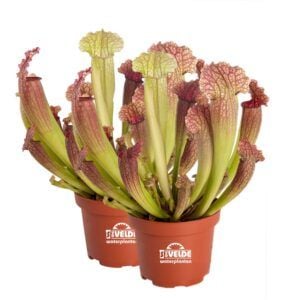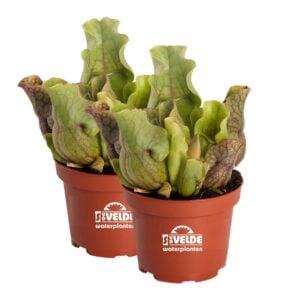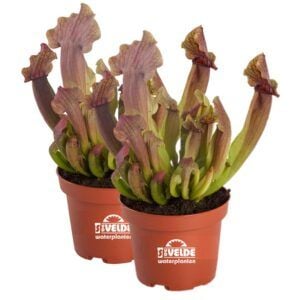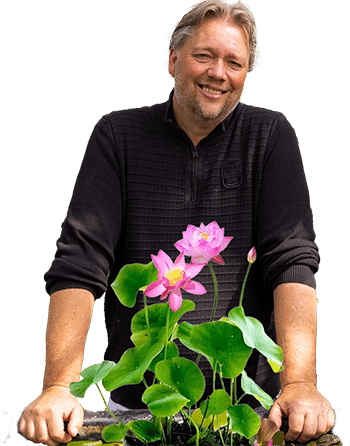Trumpet cup plant
Trumpet cup plant
Sarracenia, also known as the Trumpet Cup Plant, is a carnivorous plant native to swamps and wetlands of North America. The plant is known for its striking, funnel-shaped leaves that attract and capture insects. The unique shape and color of the leaves make the Sarracenia a fascinating, as well as useful plant that does great by any pond, but is also an asset indoors.

Carnivorous plants grow best in nutrient-poor soil, where they get water from the rain and from the water in the pond they are rooted in. A carnivorous plant does best at -0cm, it is really a riparian plant.
Trumpet cup plants
Juthatip - 2 pieces - Sarracenia Juthatip Soper
- Carnivorous plant
- Full-grown height: 40 cm
- Placement: -1 cm
Venosa - 2 pieces - Sarracenia Purpurea Venosa
- Carnivorous plant
- Full-grown height: 20 cm
- Placement: -1 cm
Maroon - 2 pieces - Sarracenia Maroon
- Carnivorous plant
- Full-grown height: 30 cm
- Placement: -1 cm
Carnivorous plants set - 3 different Sarracenia
- 3 carnivorous plants
- Full-grown height: 40 cm
- Placement: -1 cm
Frequently asked questions about the Trumpet pitcher plant
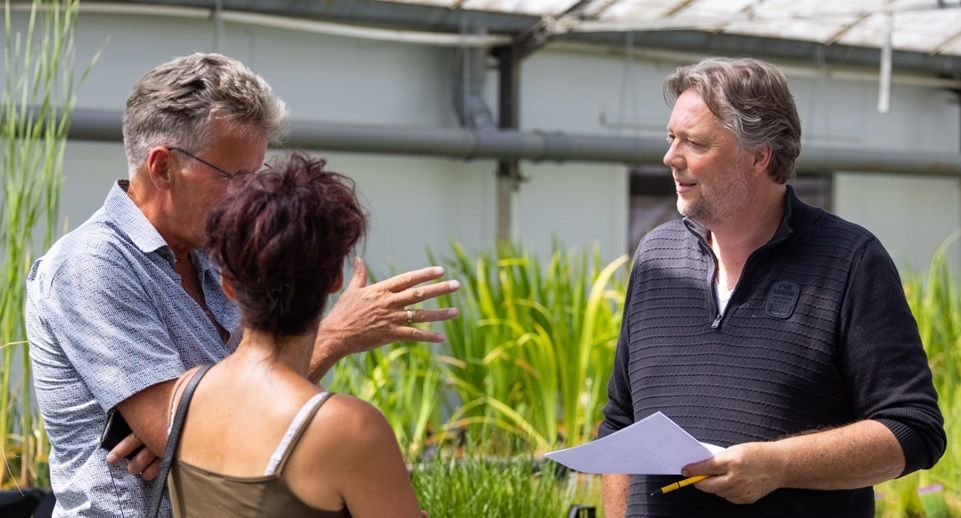
At the pond, the Sarracenia needs plenty of sunlight and consistently wet soil; avoid using fertilizer. Also, do not place these carnivorous plants next to other pond plants, as the soil is too nutrient-rich. A separate sunny spot near the pond or, for example, in a floating plant island is ideal. Indoors, the plant needs high humidity and plenty of direct sunlight. Never give the plant tap water, as tap water often contains minerals that can be harmful to the plant. Always use rainwater or Swampworld raindrops to keep the plant healthy.
Sarracenia Maroon is known for its deep red, almost burgundy-colored cups that provide a striking contrast to the green of other plants. This colorful variety is especially popular among carnivorous plant enthusiasts due to its unique appearance. Sarracenia Venosa is appreciated for its robustness and the interesting texture of its cup-like leaves, which have a velvety appearance. Sarracenia Juthatip is known for its multicolored cups that range from pink to pale green and purple. Named after Juthatip Soper, a well-known lover and breeder of carnivorous plants, this hybrid is loved for its striking colors and complex patterns. The Sarracenia is a strong plant that is quite easy to care for.
Sarracenia can be a valuable addition to a pond because of their unusual appearance and their useful function. Because of their carnivorous properties, trumpet cup plants help control the insect population around the pond and can naturally help control pests. In addition, Sarracenia can also help purify the water in the pond. The leaves of the plants act as filters, removing pollutants and nutrients from the water. This can help improve water quality and thus water values for fish and other aquatic animals and reduce algae growth.
Trumpet pitcher plants can grow between 20 and 60 centimeters tall, depending on which type of trumpet pitcher plant you choose. In fact, the Juthatip grows up to 60 centimeters tall, the Maroon and the Venosa grow around 20 centimeters tall on average. The lifespan of trumpet cup plants can vary, this depends on several factors such as the species, growing conditions and care. In general, these plants can live for decades.
The Sarracenia is quite hardy and can survive in temperatures as low as -18 degrees celcius. However, when it freezes for too long a period in a row, the plant cannot absorb water for too long as the soil is frozen. Then it is advisable to protect the plant.
Sarracenia
Taking care of trumpet cup plants
- Light: Trumpet cup plants need plenty of light to grow well. Place them where they will receive direct sunlight, such as a sunny windowsill. If natural sunlight is limited, artificial grow lights can be a good addition.
- Water: These plants like moist conditions. Use rainwater or distilled water, as tap water may contain minerals that are harmful to the plant. Always keep the soil moist, but avoid waterlogging.
- Soil: Use a soil mixture suitable for carnivorous plants. A mix of peat moss and perlite works well. Avoid standard potting soil, as it often contains too many nutrients.
- Nutrition: Trumpet cup plants get their nutrients mainly from captured insects. There is no need to give them additional fertilizer. If they grow indoors and have little access to natural prey, you can occasionally place a small insect in the traps.
- Winter care: Many species of trumpet cup plants need a rest period in winter. During this period, you can reduce watering and move the plant to a cooler location.
- Repot: Repot the plant every few years to ensure the soil stays fresh and the roots have enough space.


